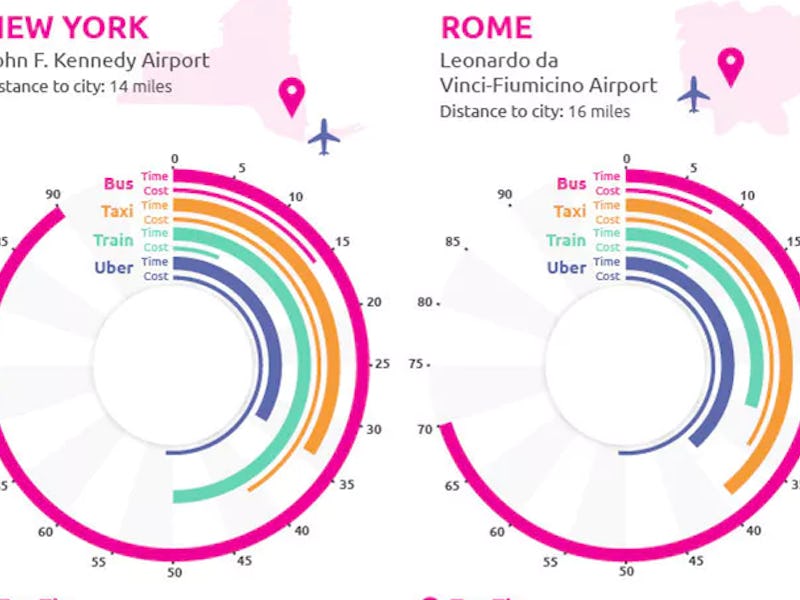Uber may have its wheels firmly on the ground, but it’s had a big effect on how people travel by plane. A new infographic comparing time and costs associated with traveling from the airport to a city center reveals that the ride-hailing app, in many instances, is a tourist’s best option for getting around. With the company exploring autonomous cars and flying machines of its own, it could develop into an even more efficient transport method than today.
The data, collected by travel blog LastMinute.com, compared the time and cost of taking a bus, taxi, train and Uber from the airport to the city center. The team compared travel in New York, Rome, Barcelona, Paris, London, Bangkok, Singapore, Dubai, Los Angeles, Sydney, Hong Kong and Amsterdam, and the results are essential for understanding the success of Uber.
For price-conscious travelers, the bus is almost always the cheapest option but takes the longest. The train is usually slightly more expensive, but taxis represent a time-saving way to get to the city for travelers with the money. Uber changes this dynamic by promising the same travel times as a taxi while offering a lower price (still more expensive than the bus or train, though.)
Some cities buck the trend due to local taxi regulations. New York City mandates a flat fare of $52 plus tolls from JFK airport to the city, while Rome sets the fare at €30 ($32.94) from Ciampino airport. In these instances, taking a regular taxi works out as a far better deal.
Uber’s work on vertical takeoff and landing services could change this further. Last year, the company detailed a white paper for a small aircraft that integrated with the existing car-based service at either end. As they don’t require a runway, Uber could locate the landing pads closer to the city center, enabling even faster access. With the right structures in place, this could pose a challenge to short-haul flights altogether.
The company is also working on its own autonomous car system. When cities reach a point where more cars on the road are autonomous, efficiencies in the way they move around a city could allow cars to move at faster speeds without crashing. A Princeton study found that by 2035, autonomous cars will be 35 percent more efficient in how they drive than traditional human drivers. Uber has already made a mark on how tourists travel, but it could be just the beginning.
View the data below:
The infographic shows which are the best ways to travel from the airport.
